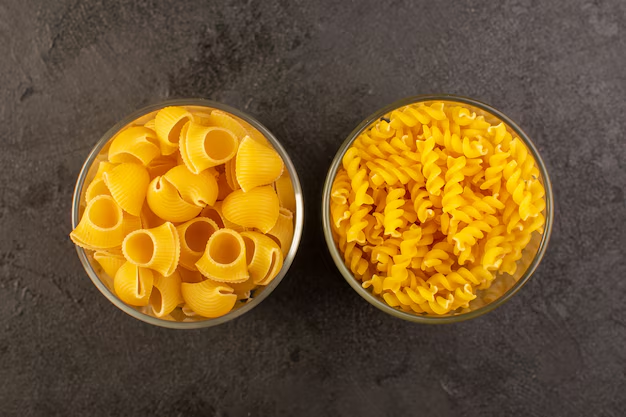Keeping Cooked Pasta Fresh: Understanding Its Refrigerator Lifespan 🍝
Who hasn't enjoyed the convenience of boiling a big pot of pasta, only to realize you’ve cooked just a bit too much? The leftover pasta dilemma is a common one. But how long can you really let that cooked pasta sit in your refrigerator before it’s no longer safe to eat? This guide explores the nuances of storing cooked pasta, offering practical tips to maximize its shelf life while ensuring it remains a delicious and safe option for your next meal.
Getting to Know Your Pasta's Shelf Life 🚦
How Long Does Cooked Pasta Last?
Cooked pasta generally stays fresh in the refrigerator for three to five days. This timeframe allows you to enjoy leftovers without worrying about spoilage. However, its lifespan can vary slightly based on the type of pasta and how it is stored. Here’s why:
- Pasta Type: Certain shapes and types may hold up better or worse than others. For instance, pasta with sauces, especially creamy ones, may have a shorter shelf life due to more perishable ingredients.
- Storage Conditions: Proper storage involves keeping the pasta in airtight containers to prevent exposure to humidity and contaminants, thereby extending its shelf life.
Why Does Pasta Go Bad?
Like most cooked foods, pasta is susceptible to bacterial growth once it cools. The moist environment can harbor bacteria such as Bacillus cereus, known to cause foodborne illnesses if consumed. Understanding the time limit is crucial to avoiding food waste and potential health risks.
Keeping It Fresh: Best Storage Practices 🥡
Cool Before You Store
Allow your pasta to cool for a bit before placing it in the refrigerator. But do not leave it at room temperature for more than two hours. Quick cooling reduces the risk of bacterial growth.
Airtight Containers Are Key
Utilize sealed containers or resealable bags to store your pasta. This technique helps lock moisture in and keeps air out, contributing to longer freshness.
Separate the Sauce
If possible, store sauces and pasta separately. This method prevents pasta from absorbing too much moisture from the sauce, which can make it soggy and less palatable upon reheating.
Pasta and Food Safety: A Must-Know Guide 🛡️
Signs of Spoilage
Even with the best storage techniques, it’s important to recognize when your pasta has reached the end of its refrigerator life. Here are a few signs:
- Off Smell: An unusual or sour odor is a clear indicator that your pasta is no longer safe to eat.
- Color Changes: Discoloration or mold signifies it's time to toss it.
- Texture: If the pasta has become slimy or the texture is off, discard it immediately.
Risk of Consuming Spoiled Pasta
Eating pasta that isn't fresh can lead to foodborne illnesses. Over time, bacteria multiply, producing toxins that even refrigeration can’t always halt. Consuming spoiled pasta may result in symptoms like nausea, vomiting, or abdominal discomfort.
Reheating Leftover Pasta: Tips for Tastiness 🔥
How to Reheat
- Stovetop: Add a touch of water or broth to a saucepan before throwing in the pasta. Heat gently over low to medium heat, stirring occasionally.
- Microwave: If using a microwave, splash a little water on the pasta and cover with a microwave-safe lid or wrap to prevent drying.
- Oven: For pasta bakes, preheat the oven to 350°F (175°C), cover the dish with foil, and heat for about 15-20 minutes.
Maintaining Flavor and Texture
Add a small amount of butter, olive oil, or additional seasoning to revitalize the flavors. Stirring in these ingredients during reheating can counteract any dryness and improve mouthfeel.
Practical Tips for Pasta Lovers ✔️
Here's a quick summary of essential tips for safely storing and enjoying leftover pasta:
- 🕒 Timeframe: Consume within three to five days.
- 🥡 Storage: Use airtight containers, and cool pasta before refrigerating.
- 🔄 Reheating: Add liquid to prevent drying; use microwave, stovetop, or oven for best results.
- 🔍 Signs of Spoilage: Look out for off smells, color, and texture changes.
- 🍝 Separate Ingredients: Storing pasta and sauce separately can enhance freshness.
Exploring Beyond: Pasta Varieties and Their Refrigeration Behaviors 🍽️
Fresh vs. Dried Pasta
- Fresh Pasta: Made with eggs, it’s more perishable and generally doesn’t last as long as dried pasta. Before cooking, it should be refrigerated immediately and used within two to three days.
- Dried Pasta: Shelf-stable with a much longer raw storage life but behaves similarly to fresh pasta once it's cooked.
Stuffed Pasta Considerations
Stuffed options such as ravioli or tortellini can deteriorate faster due to their fillings, which may include cheese or meat. It's advisable to aim for the shorter end of the three to five-day storage period for these types.
Innovating with Leftovers: Creative Pasta Dishes 🍕🌟
Leftover pasta doesn’t have to be dull or repetitive. Here are some ideas to transform your leftovers into new, exciting meals:
- Pasta Frittata: Mix pasta with beaten eggs and cheese, then cook like an omelet for an Italian twist on breakfast.
- Pasta Salad: Incorporate your favorite vegetables, nuts, and dressings for a refreshing, cold dish.
- Stir-Fry: Sauté pasta with soy sauce, vegetables, and proteins for an Asian-inspired meal.
Final Insights and Practical Takeaways 🎯
Mastering the art of storing cooked pasta can save time and reduce waste, allowing you to enjoy your favorite carb deliciously and safely over several days. By adhering to these guidelines—timely cooling, proper storage, mindful reheating, and recognizing spoilage signs—you contribute to both your well-being and culinary satisfaction. Moreover, embracing creative reuses of leftovers can lead to discovering adventurous new takes on your favorite dishes. 🍝✨
By being thoughtful about how you store and consume leftovers, you explore sustainability in your kitchen practices—an increasingly valuable approach in today’s conscientious cooking era.
